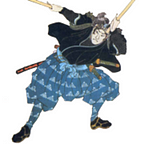The Gadget We Miss: The Clapper
Clap On! Clap Off! At least, that was the theory of this gadget.
The writer Ambrose Bierce described an inventor as “a person who makes an ingenious arrangement of wheels, levers and springs, and believes it civilization”. Perhaps the best example of the truth of this is the Clapper. Sorry, let me rephrase that: The Clapper®, a registered trademark (or application pending) worldwide. A quality Joseph Enterprises® product.
The Clapper was launched in 1986 and quickly became a fixture of advertising breaks in late-night and cable TV. The advert touted the convenience of being able to turn things on and off remotely with a couple of claps of the hand. As the catchy slogan said, “Clap on! Clap off!”. It could control two devices that plugged into sockets on the bottom of the device, turning them on or off with a couple of claps, or turning them on if it detected a noise in a special “away” mode.
It is perhaps not surprising that the device is manufactured and sold by Joseph Enterprises, who also make and sell Chia Pets, the Creosote Sweeping Log (CSL) and the Ove Glove.
After being relentlessly promoted, the device was a huge hit, selling hundreds of thousands of units over the next few years. But what most users did not realize was that they were bringing a computer into their homes. The Clapper used a microcontroller (or MCU, Microcontoller Unit), foreshadowing the more recent trend of computerizing appliances by several years.
The technology behind The Clapper is detailed in Patent #5493618, which describes it thus:
“Method and apparatus for activating switches in response to different acoustic signals”.
In other words: a sound-activated switch. The abstract of the patent then goes on to clarify that it is a bit more complicated than that. In the abstract of the patent, it is described as…
“An acoustic switch device that independently operates two or more electrical appliances. The acoustic switch operates a first electrical appliance upon receipt of a first series of acoustic signals and operates a second electrical appliance upon receipt of a second series of acoustic signals that is different from the first series of acoustic signals.”
So it is more than a simple sound-activated switch: those have been around for much longer than The Clapper. What makes it different is that it responds to a specific pattern of sounds, and can differentiate between background sounds and a specific pattern of sounds, such as repeated handclaps.
How it does this is interesting. The sound is picked up by a microphone under a grille on the front of the body of the device, and the resulting signal is then run through three filters that form a narrow pass filter, effectively removing all but sound at a frequency of around 2500Hz. This is used as the basis for the trigger, with this sound being analyzed by the microcontroller that runs the device (an SGS Thompson Model ST 6210). This controller looks at the audio signal over time to determine if it was a clap or not. It detects the clap by looking for the sharp, short characteristics of a clap: a sharp, sudden noise that doesn’t persist. So, when the controller is triggered by a noise, it measures the sound for 200 milliseconds (0.2 seconds). If the noise is heard again in that time, it is not a clap. But if it detects the sudden noise and nothing else, it’s a clap.
Of course, there can be other noises that might sound like a clap, like you dropping something. To make sure that it was deliberate, the controller then waits to detect more claps. If it hears them, it has been called into action and it turns the light on or off, depending on the state of the light.The process can also be used to detect three or four claps, and to perform another action when detected (see the flow chart above).
The process is a fascinating insight into how simple circuits like this work, and their is a lot of detail in the patent (including the source code of the microcontroller). You can also build your own clap-clap switch from this instructable guide.
This all sounded great in the commercials, but the reality proved to be less reliable. People found that The Clapper could be triggered by things other than claps: dog barks in particular sound similar to the device (they share similar frequencies and timing), so it wasn’t unusual to find your electronics turned on if your hound was in a vocal mood. The device was also very sensitive to the timing of the claps: too quickly or too slowly and the claps were not detected.
It also generated lawsuits. An 80-year old user called Edna Hubbs tried to sue the company after she injured her hands trying to get a Clapper to respond, but the case was dismissed when it was discovered that she had not used the sensitivity control on the device, a verdict upheld on appeal.
So The Clapper is a Gadget We Miss. In these days of smart homes , internet-connected washing machines and web-enabled wall sockets, it seems incredibly quaint to control things with a clap: that’s what smart phones are for. But what most people didn’t realize was that by using a clapper (sorry, The Clapper®), they were bringing a computer into their homes and giving control of their lights and other devices over to it. This was setting the scene for the home of the future that is now, finally, beginning to become a reality.
Do you remember The Clapper®? You can post your memories of this or other gadgets you miss to this article as notes, or sign up to Medium to post your own gadget memories.
